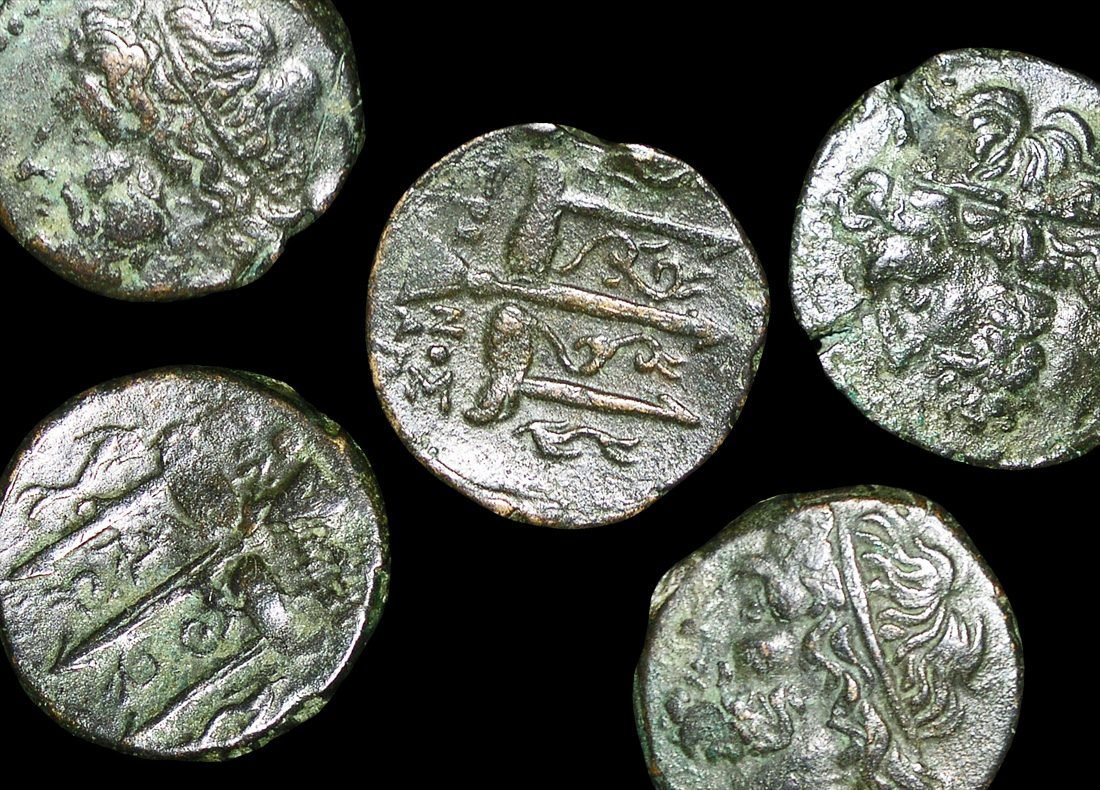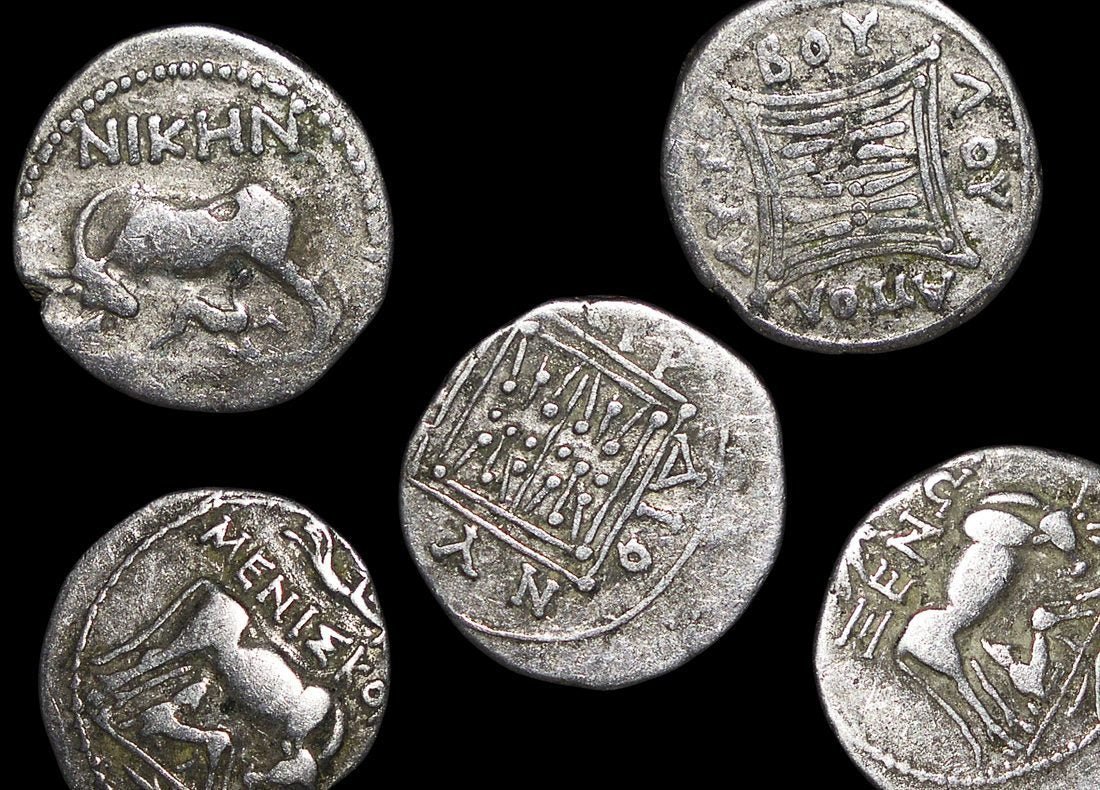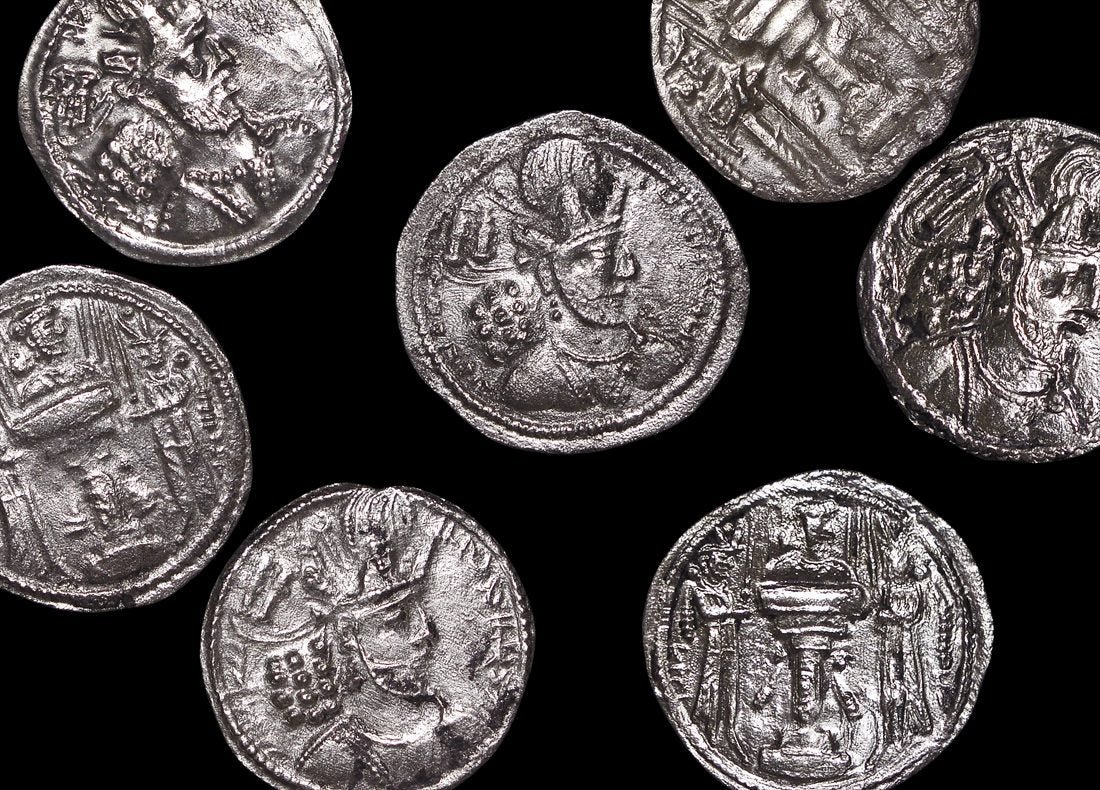 Image 1 of
Image 1 of


Greek Silver Diobol from Teos (about 2,350-2,300 years ago)
This small silver diobol was minted in the Greek city of Teos, an important Ionian seaport on the western coast of Asia Minor (modern Turkey). Issued during the early Hellenistic period following Alexander the Great's conquest of the Persian Empire, this coin reflects the revival of the city's prosperity after periods of foreign domination and displacement.
Coin Description:
Front side: Likely depicts a griffin (mythological creature with an eagle's head and lion's body) seated or rearing, which was the civic emblem of Teos, or possibly the head of Dionysus, the city's patron deity.
Back side: Probably shows a lyre or kantharos (wine cup), both symbols associated with Dionysus, along with the inscription "ΤΗΙΩΝ" (of the people of Teos).
Technical Details:
Material: Silver
Denomination: Diobol (a small denomination worth two obols, or 1/3 of a drachm)
Minting date/period: 320-294 BCE (approximately 2,350-2,300 years ago)
Condition: Varies by specimen
Historical Significance:
This coin represents the resilience of Greek cities in western Asia Minor (modern Turkish coast). After being conquered by the Persian King Cyrus the Great in 540 BCE, Teos' inhabitants temporarily abandoned their city rather than submit to foreign rule, relocating to Thrace before eventually returning. The city later recovered its prosperity under Alexander's successors, as reflected in this coinage. The diobol demonstrates how Greek cultural and economic life persisted and adapted despite centuries of political upheaval, continuing into the Roman period.
This small silver diobol was minted in the Greek city of Teos, an important Ionian seaport on the western coast of Asia Minor (modern Turkey). Issued during the early Hellenistic period following Alexander the Great's conquest of the Persian Empire, this coin reflects the revival of the city's prosperity after periods of foreign domination and displacement.
Coin Description:
Front side: Likely depicts a griffin (mythological creature with an eagle's head and lion's body) seated or rearing, which was the civic emblem of Teos, or possibly the head of Dionysus, the city's patron deity.
Back side: Probably shows a lyre or kantharos (wine cup), both symbols associated with Dionysus, along with the inscription "ΤΗΙΩΝ" (of the people of Teos).
Technical Details:
Material: Silver
Denomination: Diobol (a small denomination worth two obols, or 1/3 of a drachm)
Minting date/period: 320-294 BCE (approximately 2,350-2,300 years ago)
Condition: Varies by specimen
Historical Significance:
This coin represents the resilience of Greek cities in western Asia Minor (modern Turkish coast). After being conquered by the Persian King Cyrus the Great in 540 BCE, Teos' inhabitants temporarily abandoned their city rather than submit to foreign rule, relocating to Thrace before eventually returning. The city later recovered its prosperity under Alexander's successors, as reflected in this coinage. The diobol demonstrates how Greek cultural and economic life persisted and adapted despite centuries of political upheaval, continuing into the Roman period.
This small silver diobol was minted in the Greek city of Teos, an important Ionian seaport on the western coast of Asia Minor (modern Turkey). Issued during the early Hellenistic period following Alexander the Great's conquest of the Persian Empire, this coin reflects the revival of the city's prosperity after periods of foreign domination and displacement.
Coin Description:
Front side: Likely depicts a griffin (mythological creature with an eagle's head and lion's body) seated or rearing, which was the civic emblem of Teos, or possibly the head of Dionysus, the city's patron deity.
Back side: Probably shows a lyre or kantharos (wine cup), both symbols associated with Dionysus, along with the inscription "ΤΗΙΩΝ" (of the people of Teos).
Technical Details:
Material: Silver
Denomination: Diobol (a small denomination worth two obols, or 1/3 of a drachm)
Minting date/period: 320-294 BCE (approximately 2,350-2,300 years ago)
Condition: Varies by specimen
Historical Significance:
This coin represents the resilience of Greek cities in western Asia Minor (modern Turkish coast). After being conquered by the Persian King Cyrus the Great in 540 BCE, Teos' inhabitants temporarily abandoned their city rather than submit to foreign rule, relocating to Thrace before eventually returning. The city later recovered its prosperity under Alexander's successors, as reflected in this coinage. The diobol demonstrates how Greek cultural and economic life persisted and adapted despite centuries of political upheaval, continuing into the Roman period.
You Might Also Like






